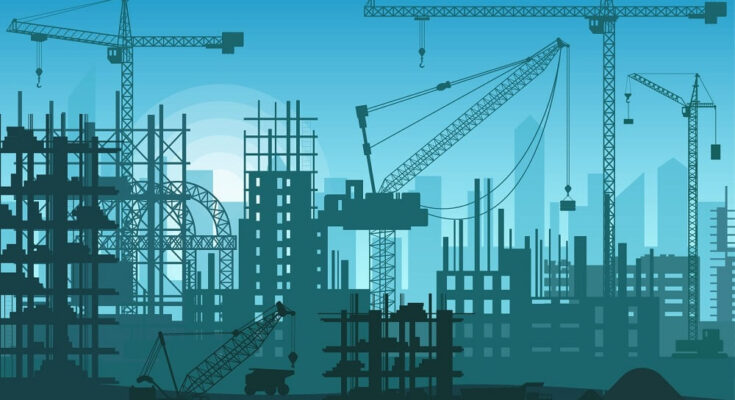Structural engineering, a discipline often perceived as purely technical and functional, transcends its conventional boundaries, merging strength with aesthetics to create structures that are not only safe and durable but also visually compelling. In this exploration delves into the intricate art of structural engineering, revealing how it plays a pivotal role in shaping our built environment.
The Essence of Structural Engineering
Structural engineering’s primary goal is to guarantee the stability and safety of buildings and other structures. To make sure that a structure can sustain different loads and stresses throughout its lifetime, careful calculations, material selection, and design principles are required. However, a structural engineer’s job description encompasses more than just these technical facets. To establish a perfect balance between usefulness and aesthetics, engineering solutions are linked with architectural ideas through a creative process.
The Evolution of Structural Design
The history of Structural Engineering is a testament to the human endeavor to build higher, span wider, and create structures that are not only more efficient but also more beautiful. From the ancient pyramids and Gothic cathedrals to modern skyscrapers and suspension bridges, each era has pushed the boundaries of what is possible, blending engineering ingenuity with artistic expression.
Material Innovation and Aesthetics
A key consideration in structural engineering is material selection. Design and aesthetic options have increased because of advancements in materials including steel, concrete, glass, and composites. For example, the development of reinforced concrete and high-strength steel has made it possible to build broad bridges and attractive, slender buildings. Comparably, the use of glass in facades has transformed the appearance of buildings by making it possible to create transparent, light-filled areas.
The Role of Technology in Design
Technological developments have had a big impact on structural engineering. Building information modeling (BIM) and computer-aided design (CAD) software have revolutionized the conceptualization and construction of structures. Thanks to these technologies, engineers can now design with more precision and efficiency, exploring previously unattainable complicated geometries and creative shapes. Furthermore, engineers can forecast the behavior of buildings under different conditions thanks to simulation technologies, guaranteeing both structural integrity and safety.
Sustainability: A New Dimension in Structural Engineering Sustainability has become a crucial aspect of modern structural engineering. The challenge lies in creating structures that are not only visually appealing but also environmentally responsible. This involves the use of sustainable materials, energy-efficient designs, and the incorporation of green spaces. Green roofs, natural ventilation systems, and the integration of renewable energy sources are examples of how structural engineering contributes to sustainable and aesthetically pleasing building designs.
Iconic Structures: A Testament to Engineering and Aesthetics
There are many instances of buildings all around the world that perfectly combine structural engineering and design. Not only are the Sydney Opera House, the Burj Khalifa, and the Eiffel Tower examples of engineering marvels, but they are also artistic creations. They show how structural engineers and architects may collaborate to produce forms that are both symbolic and useful.
The Human Aspect of Structural Design
Buildings and bridges are only one aspect of structural engineering; another is designing areas for people to live, work, and play. These places need to be designed with a thorough grasp of how people interact with their built environment. This entails taking into account elements that have a major impact on the living rooms’ aesthetic and practical quality, such as light, acoustics, and space use.
The Future of Structural Engineering
Structural engineering has a bright future ahead of it. The lines separating engineering from art will continue to blur with the development of new materials, technologies, and design processes. Structure design and construction are about to undergo a radical change thanks to innovations like 3D printing and smart materials. More emphasis will be placed on building structures that are not just efficient and sound structurally, but also visually appealing and blend in with their surroundings.
Integrating Art and Engineering
The integration of art and engineering is at the heart of structural engineering. This synergy is evident in the way engineers and architects collaborate, bringing together technical expertise and creative vision. The result is often iconic structures that are as much a celebration of human creativity as they are marvels of engineering. This collaboration extends beyond the visual, encompassing the acoustic, tactile, and even the emotional aspects of a structure, ensuring a holistic experience.
The Importance of Context in Structural Design
Structural engineering is not just about the structure itself but also its context. This includes the geographical, cultural, and historical context in which a structure is built. Engineers must consider local climate, seismic activity, historical significance, and cultural values when designing a structure. This sensitivity to context not only ensures the safety and functionality of the structure but also its aesthetic relevance and harmony with the surroundings.
The Aesthetic of Minimalism and Efficiency
In recent years, there has been a growing trend towards minimalism and efficiency in structural design. This approach favors simple, clean lines and forms that reveal the underlying structure of a building. The beauty of this approach lies in its honesty and simplicity, where the structural elements themselves become the focal point of aesthetic appreciation.
The Role of Innovation in Structural Engineering
Innovation is a driving force in the field of structural engineering. Engineers are constantly exploring new materials, techniques, and technologies to push the boundaries of what is possible. This spirit of innovation not only leads to more efficient and sustainable structures but also opens up new possibilities for aesthetic expression.
Educating the Next Generation of Structural Engineers
The future of structural engineering lies in the hands of the next generation of engineers. Education and training programs are increasingly focusing on not just the technical aspects of engineering but also on design, sustainability, and the social implications of engineering decisions. This holistic approach is essential for preparing engineers to meet the challenges of the future and continue the legacy of blending strength with aesthetics.
Conclusion
Structural engineering is a field that beautifully encapsulates the intersection of science and art. It is about creating structures that are safe, functional, and sustainable, but also about pushing the boundaries of design to create spaces that inspire and delight.
Also Read: Business Signage: Choosing the Right Style for Your Industry
As we look to the future, the role of structural engineering in shaping our built environment will only grow in importance, requiring a continued focus on innovation, sustainability, and the seamless integration of strength with aesthetics. The art of structural engineering, therefore, is not just about building structures; it’s about building legacies that stand as testaments to human ingenuity and creativity.




